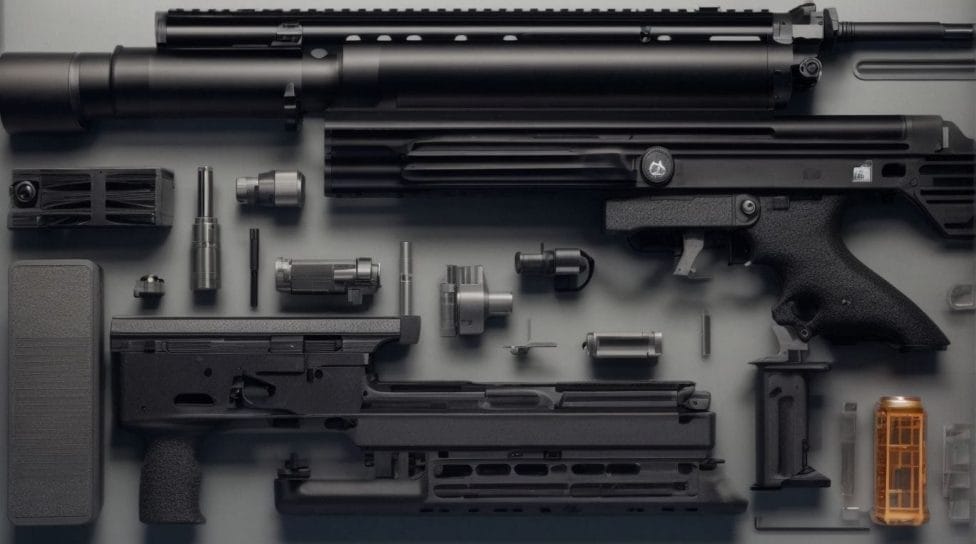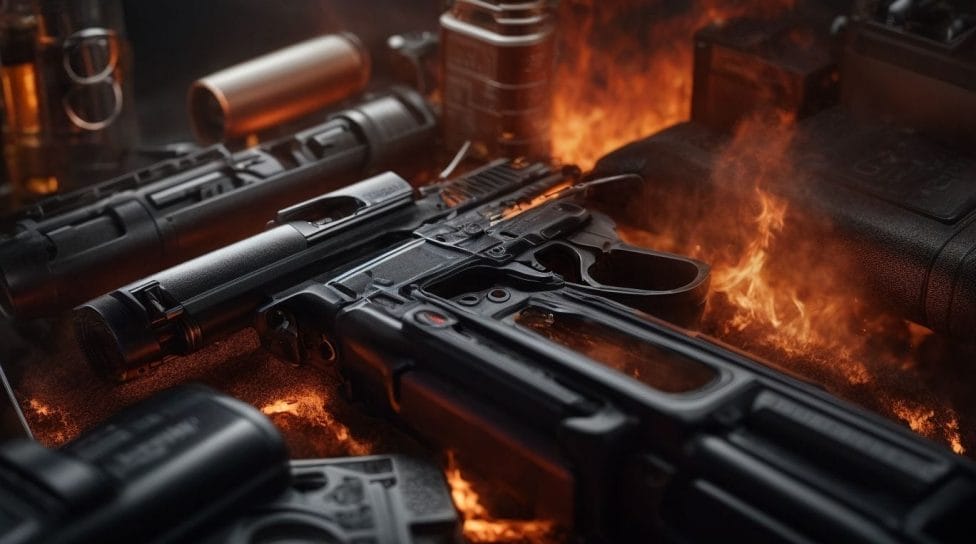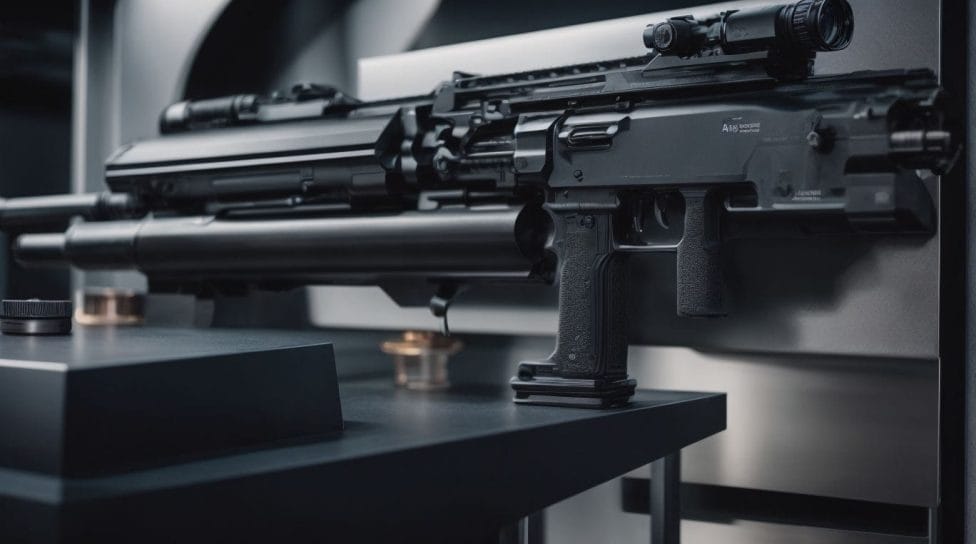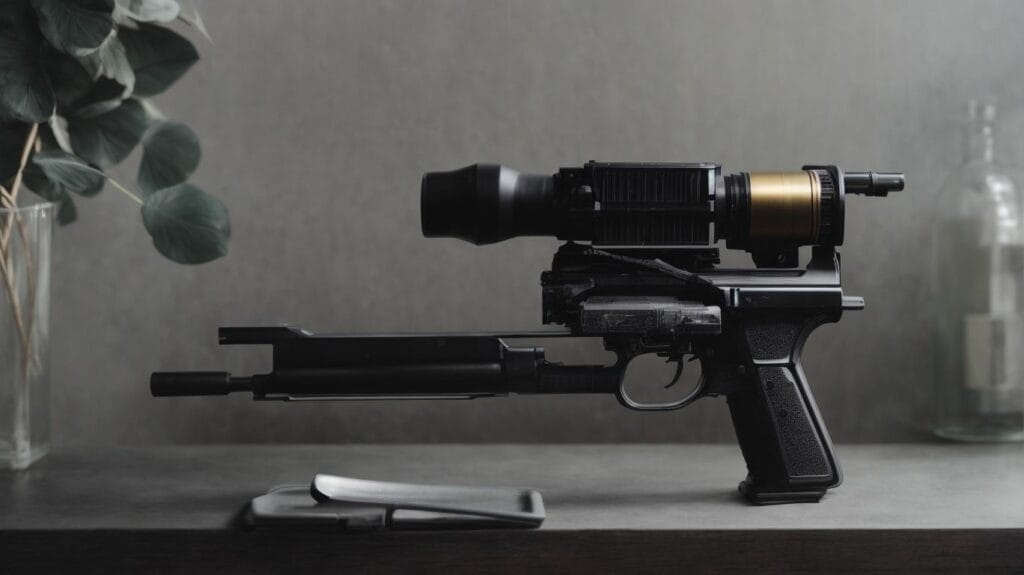3D printing technology has revolutionized various industries, allowing for the creation of intricate and customized objects. This advancement has sparked debates and concerns, especially regarding firearms production. The topic of whether it is possible to 3D print a gun has raised questions regarding legality, public safety, and potential impacts on existing gun control laws. Let us delve into the details.
A 3D-printed gun is created using a 3D printer that combines plastic and metal components. Understanding how a 3D-printed gun works involves examining the process of assembling the various parts and the mechanisms involved. It is important to understand the legal implications surrounding the production and possession of such firearms. There is a growing controversy surrounding the availability of 3D-printed gun blueprints, the durability of the materials used, and the potential legal consequences and penalties associated with their creation or use. The future of 3D-printed guns and the potential for regulations is a topic of ongoing discussion, with advancements in 3D printing technology leading to further exploration of possible regulations and their impact on the accessibility and safety of these firearms.
Key takeaways:
- 3D printed gun availability: Despite the controversies, blueprints for 3D printed guns can be found online, creating concerns about unauthorized access to firearms.
What is a 3D Printed Gun?

Photo Credits: Futureproof3D.Com by Charles Johnson
What is a 3D Printed Gun?
A 3D-printed gun is a firearm created using a 3D printer. This remarkable technology allows weapons production by layering materials like plastic or metal, resulting in a fully functional armament. These guns have garnered considerable attention due to their unique attribute of being able to be manufactured at home, eliminating the need for a background check or serial number. As a consequence, concerns about public safety and legality have arisen. It is crucial to acknowledge that 3D-printed guns may not exhibit the same reliability or durability as conventionally made firearms. Furthermore, the production and distribution of these weapons may be subject to strict laws and regulations in numerous countries to prevent potential misuse.
How Does a 3D-Printed Gun Work?
How Does a 3D-Printed Gun Work?
A 3D-printed gun functions by utilizing a 3D printer to fabricate the various components of the gun, including the barrel and the frame. These components are typically crafted from plastic or other materials that can be melted and shaped through 3D printing. Once the components are produced, they are assembled and combined with other essential parts, such as the trigger mechanism and ammunition. Subsequently, the gun can be fired. It is important to acknowledge that 3D-printed guns may not possess the same level of durability or reliability as traditionally manufactured firearms.
While 3D-printed guns remain a controversial subject, it is crucial to understand the risks and legal implications associated with them. As technology progresses, it becomes imperative to implement stricter regulations to safeguard public safety and prevent the misuse of 3D-printed firearms.
Is It Legal to 3D Print a Gun?
Is it legal to 3D print guns? The legality of 3D printing guns is an important consideration. While the technology allows for the creation of firearms, it is crucial to understand that the laws surrounding this practice can vary from country to country. In certain jurisdictions, manufacturing or possessing guns without the appropriate licenses is illegal, regardless of how they are produced. Additionally, specific regulations exist in some places that limit the creation or use of 3D-printed guns. Therefore, individuals must thoroughly research and comprehend the laws in their respective regions before engaging in 3D printing firearms to ensure compliance and avoid potential legal consequences.
The Controversy Surrounding 3D Printed Guns

Photo Credits: Futureproof3D.Com by Robert Lee
The Controversy surrounding 3D-printed guns has sparked intense debates and raised crucial questions about public safety and gun control laws. Delve into the concerns of public safety and explore the potential impact on existing regulations. Brace yourself for an eye-opening exploration into the world of 3D-printed firearms, where the intersection of technology and security takes center stage. Hold on tight as we unravel the complexities surrounding this contentious issue.
Concerns of Public Safety
Public safety concerns are a major issue surrounding the production and distribution of 3D-printed guns. There are worries about the potential for these weapons to fall into the wrong hands, as they can be printed at home without undergoing the usual regulations and background checks associated with purchasing firearms. The ease of access to these weapons raises legitimate concerns about their use in criminal activities or acts of violence, thereby compromising public safety. It is essential to note that 3D-printed guns may not meet the same safety standards as traditional firearms, leading to increased risks of accidents or malfunctions. These significant concerns underscore the urgent need for regulations and stricter controls over the production and distribution of 3D-printed guns to ensure the highest priority of public safety.
Impact on Gun Control Laws
The impact on gun control laws from the advent of 3D-printed guns is significant worldwide. These homemade firearms, created using a 3D printer, have sparked a debate on the efficacy of current regulations. Addressing this emerging threat requires policymakers to reassess and update legislation. The accessibility and anonymity of 3D-printed guns make it challenging to regulate their distribution and possession. Consequently, lawmakers must consider implementing stricter regulations and controls to prevent the proliferation of untraceable, unregistered firearms. This evolving technology compels authorities to swiftly adapt to maintain public safety and uphold existing gun control laws.
Can You 3D Print a Gun?

Photo Credits: Futureproof3D.Com by Peter Flores
Can you 3D print a gun? Let’s dive into the world of 3D printing guns and discover the answers to this controversial topic. From the availability of 3D-printed gun blueprints to the challenge of material durability and the legal consequences and penalties involved, we’ll explore the intriguing facets of this subject. Prepare to uncover the facts, debates, and potential implications surrounding creating firearms with just a printer.
Availability of 3D Printed Gun Blueprints
The availability of 3D-printed gun blueprints has become a contentious matter, given the concerns surrounding public safety and the legal aspects surrounding their distribution. Previously, these blueprints were widely accessible online, but there have been efforts to limit their availability. The accessibility of 3D-printed gun blueprints varies depending on the jurisdiction and the specific regulations that are in place. Certain countries have implemented stringent laws to prevent the dissemination of such blueprints, whereas others may have more lenient regulations. It is important to consider the legal ramifications and potential penalties associated with accessing or distributing 3D-printed gun blueprints.
Challenge of Material Durability
The challenge of material durability regarding 3D-printed guns is a significant concern. The table below illustrates the durability of different materials commonly used in 3D-printed guns.
| Material | Durability |
|---|---|
| PLAY | Low |
| ABS | Medium |
| Nylon | High |
The challenge of material durability regarding 3D-printed guns is a significant concern. The table below illustrates the durability of different materials commonly used in 3D-printed guns.
| Material | Durability |
|---|---|
| PLAY | Low |
| ABS | Medium |
| Nylon | High |
PLA, a commonly used material, has low durability and can easily break or fail under stress. ABS offers better durability, but it may still suffer from wear and tear over time. Nylon, on the other hand, provides high durability and can withstand more rigorous use. Can You 3D Print a Gun?
PLA, a commonly used material, has low durability and can easily break or fail under stress. ABS offers better durability, but it may still suffer from wear and tear over time. Nylon, on the other hand, provides high durability and can withstand more rigorous use. Can You 3D Print a Gun?
To address the challenge of material durability, researchers are constantly exploring new materials and improving the strength and reliability of 3D-printed gun components. It is important to ensure that any regulations surrounding 3D-printed guns also address this issue to prevent the creation of unsafe firearms.
To address the challenge of material durability, researchers are constantly exploring new materials and improving the strength and reliability of 3D-printed gun components. It is important to ensure that any regulations surrounding 3D-printed guns also address this issue to prevent the creation of unsafe firearms.
Legal Consequences and Penalties
| Legal Consequences | Penalties |
| Printing a gun without proper authorization | Fines, imprisonment, or both |
| Violating firearms regulations | Criminal charges, fines, and potential imprisonment |
| Use of an unregistered firearm | Legal charges, fines, and possible imprisonment |
| Selling or distributing 3D-printed guns | Serious criminal charges and significant penalties |
| Creating firearms without proper serial numbers or markings | Legal consequences, including criminal charges and fines |
The Future of 3D Printed Guns and Regulations

Photo Credits: Futureproof3D.Com by Logan Johnson
As we delve into the future of 3D-printed guns and regulations, get ready to witness the mind-blowing advancements in 3D printing technology and engage in a riveting discussion on the potential regulations that may shape this controversial domain. With a new wave of possibilities emerging, it’s time to explore the cutting-edge innovations and the complex debates surrounding the intersection of 3D printing and gun production. Brace yourself for a thought-provoking journey into the future of firearms manufacturing.
Advancements in 3D Printing Technology
Advancements in 3D Printing Technology have had a profound impact on several industries, such as manufacturing, healthcare, and aerospace. The following are noteworthy developments in the realm of 3D printing:
- Enhanced precision and resolution: Nowadays, 3D printers can fabricate intricate and detailed objects more accurately.
- Expanded variety of materials: Thanks to breakthroughs in materials science, 3D printers can now utilize a wider range of materials, including metals, ceramics, and composites.
- Increased speed and efficiency: Recent printing techniques and technologies have significantly reduced printing time and boosted production efficiency.
- Multi-material and multi-color printing: 3D printers can now produce objects with multiple materials and colors in a single print job.
- Bioprinting: The field of bioprinting has emerged, enabling the printing of living tissues and organs, holding great potential for transforming the healthcare sector.
Discussion on Possible Regulations
Regarding 3D-printed guns, the need for regulations sparks a passionate debate. The topic centers around two crucial aspects: the availability of blueprints and the durability of materials utilized. At present, concerns arise as individuals can easily access gun blueprints online while bypassing conventional background checks. The key challenge is ensuring the strength of the materials used for 3D-printed guns to prevent accidents or malfunctions. Looking ahead, it is imperative to establish comprehensive regulations that effectively address public safety and control the distribution of these firearms. The ongoing discussion on possible regulations plays a vital role in shaping this important matter.
Some Facts About Can You 3D Print a Gun?:
- ✅ 3D-printed firearms have become increasingly reliable and can be made at home without federally regulated components. (Source: The Trace)
- ✅ Some 3D-printed guns can be made entirely on a 3D printer, while others require additional metal parts. (Source: The Trace)
- ✅ Lower receivers, which require a federal background check to purchase, are a common focus for 3D-printed gun blueprints. (Source: The Trace)
- ✅ 3D-printed guns concern law enforcement because they are untraceable and can bypass background checks. (Source: The Trace)
- ✅ The lack of traceability of 3D-printed guns has attracted the attention of terror groups. (Source: The Trace)


